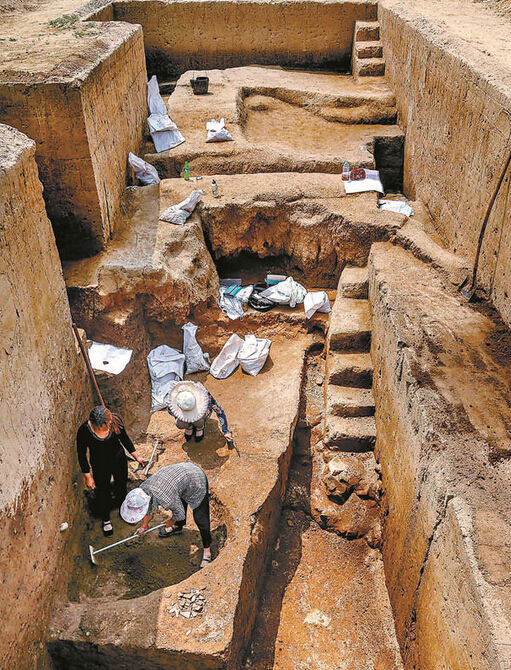Museum, park to be constructed on ruins of ancient capital
 |
|
The the archaeological site of the capital of the Xia Dynasty (c. 21st century-16th century BC) in Erlitou in Henan Province in central China. [lyrb.com] |
A museum and a park will be built on the ruins of the capital of the Xia Dynasty (c. 21st century-16th century BC), China’s earliest dynasty, local cultural heritage authorities said on Thursday.
“Construction of the project will start in the first half of the year near the village of Erlitou in the city of Luoyang where more than 40,000 square meters of the ruins have been excavated since 1959,” said Yu Jie, head of the city’s cultural heritage bureau.
Citing a plan passed by the provincial government, Yu said that the museum, with a planned building area of 30,000 square meters, will showcase about 40,000 items, such as excavated antiques, text and graphic documents related to the early dynasties, including the Xia and Shang (c. 16th century-11th century BC).
The most famous piece unearthed there is a 70-centimeter-long dragon formed from more than 2,000 pieces of turquoise. Chinese archaeologists dubbed the artifact the “Dragon of China”, saying it was the earliest evidence of Chinese infatuation with dragons.
A cultural ruins park covering 41 hectares will also be built. It will protect and display the sites of the ancient city walls, palace and roads, as well as handicraft workshops of bronze casting and turquoise, and the sacrifice venue of the ruins.
“The park will also simulate scenes from more than 3,000 years ago by landscaping and building workshops based on the discoveries,” Yu said.